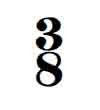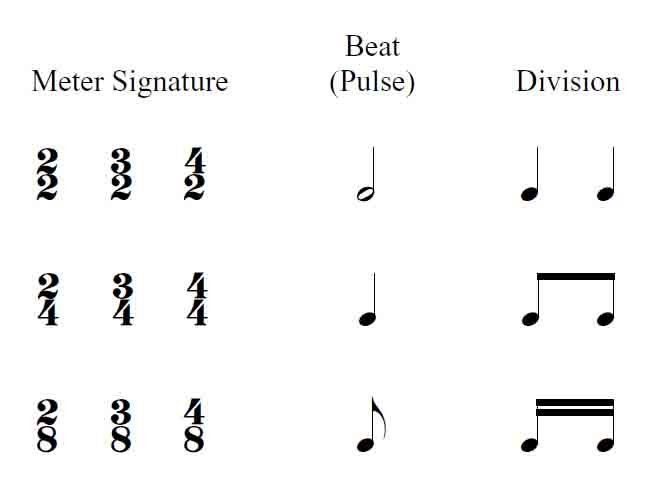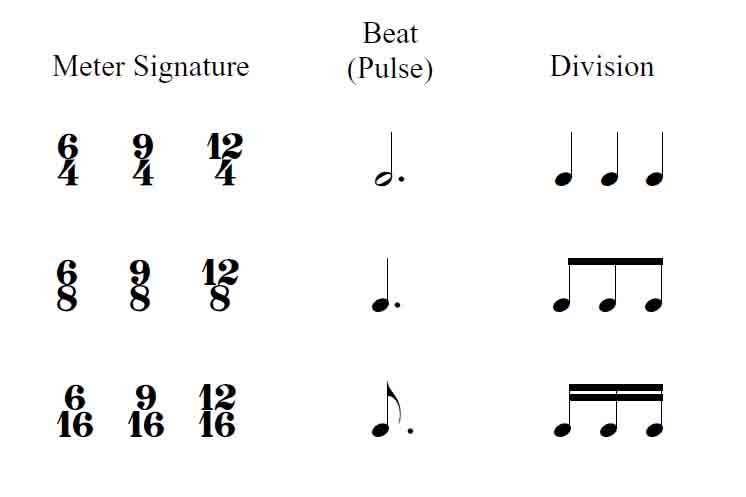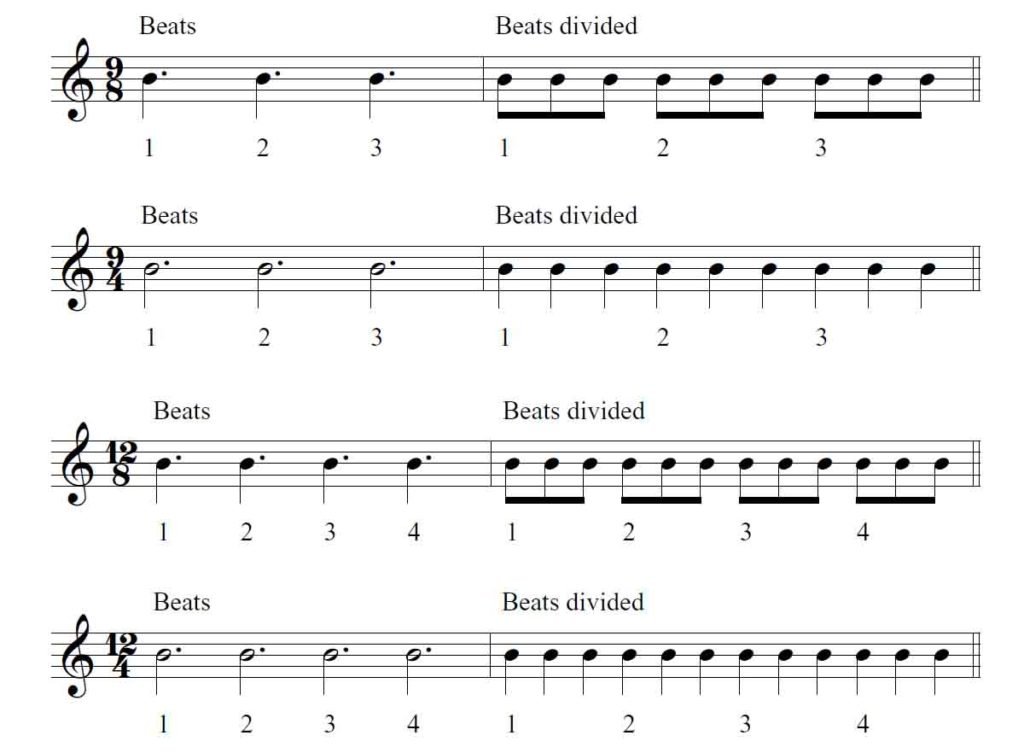Time Signature for Beginners
Every piece of music has a pulse or a count that keeps it in time. The number of beats in each measure usually remains the same in the entire piece. This underlying beat per measure is called TIME SIGNATURES or METER SIGNATURES. This article provides a simple and clear explanation about time signature for beginners.
[powerkit_toc title=”Table of Contents” depth=”10″ min_count=”4″ min_characters=”1000″]
A Time Signature is made up of two numbers. It always appears at the beginning of every piece of music. Below is an example of what time signatures look like.

Note: Remember, these numbers are not fractions so we do not read them like fractions. We simply say four-four and not four- fourth.
What the numbers mean
There are two sets of information that time signatures give us.
- The number above tells us how many beats there are in a measure
- The number below tells us what type of note receives one beat.

Take, for example, this image of a four-four time signature. The number 4 above tells us that there are four beats in every measure. The figure below tells us that a quarter note receives one beat, or you can say that there are four quarter notes in a measure
The image above is also called a common time signature. A common time signature can also be replaced with C in the staff.
Let us look at another example of a time signature

This is a three-eight time signature. The number above tells us that there are three (3) beats in a measure. The number eight below represents an eight
The image below shows a three-four time signature. A three-four time signature means 3 quarter notes per measure. The number 4 represents a quarter note. Hence, a quarter note gets one count in a three-four time signature.

Simple Meters
Our discussion so far focuses on simple meters or simple time signatures. It means that all of our meters can be subdivided into two (2).
The upper numbers of simple meters usually are 2, 3 and 4 basic pulses. Let us look at the image below to show you what I mean

Here we have an image of a three-four time signature which can be divided into a group of eight notes or sixteenth notes. The first subdivision is a subdivision of 2 eight notes for every one-quarter note. The last part of the image shows a subdivision of 4 sixteenth notes for every quarter note.
Let us look at another example.

The image above shows a three-two time signature. It means that there are three beats per measure but a half note receives one beat. A half note can be divided into two (2) quarter notes or four (4) eight notes.
The basic pulse of every simple meter is something that is note a dotted note.

Counting Method For Simple Meters
Counting simple time signature for beginners. It is helpful to know how to count your meters. A good and effective way is to count aloud and clap the rhythm at the same time.
The value of doing such method is that it transfers your counting to your brain until everything is just mental.
Although there are several systems out there on teaching you how to count simple meters, I would recommend the following.

Simply count and clap the basic pulses until you are comfortable doing it. Remember to keep the tempo steady.

This image is an example of a three-two time signature. Clap and count aloud until you are comfortable doing it.

Now, when you are presented with eight notes, you just count as presented in the image above. You use the word “and” in between the numbers of your count.

You can see in the example above the use of the word “and” in between the numbers to count in three-two time signature using quarter notes.

When counting sixteenth notes, you can employ the use of the added letters e and a. This will help you count your time signature when using sixteenth notes.
Compound Time Signatures or Meters
In compound meter, each pulse is a dotted note, which is divided into groups of three parts – a compound subdivision.

The image above gives us an example of a six-eight time signature which is a compound time signature. A six-eight time signature is equal to 2 dotted quarter notes per measure.
Remember dotted notes? My discussion on Notes and Rests clearly explains what dotted notes are. Head over there if you need to.

Just a review, a dot before a note add half of the value of that note. Refer to the image above.
Note: In a compound meter, the basic pulses will be some kind of dotted notes.

In a 6/8 meter there are two basic pulses, in a 9/8 meter there are three and a 12/8 meter has four basic pulses.

Duple, Triple and Quadruple Meters
Both the simple and compound meter will have a two, three and four recurring pulses. A meter is considered duple if it has two basic pulses. A meter is called triple if it has three basic pulses, and a quadruple meter has four basic pulses.

Counting Method For Compound Time Signatures
Remember how we counted simple meters? The same applies with counting compound meters. We use the same numbers except that the notation is different.
Let me show you an example.

The example above shows a compound meter of six-eight (6/8) and is subdivided into two basic pulses – 2 doted quarter notes.
A 6/8 meter means there are six eighth notes in a measure. A doted quarter note in a 6/8 meter is equal to three eight notes.

Asymmetrical Time Signatures or Meters
Asymmetrical means not equal or is not symmetric. These are meters that cannot be divided into two, three, or four primary pulses. The upper numbers of an asymmetrical meter are usually 5 or 7.

Here is an additional source to understanding time signature for beginners. Did you find this article on time signature for beginners helpful?
:O
Hello Abby, I hope you found this article useful 🙂